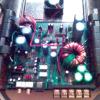-
Recently Browsing 0 members
No registered users viewing this page.
-
-
Recent Topics
-
- 396 comments
- 32,931 views
-
- 1 comment
- 40 views
-
- 4 comments
- 107 views
-
- 17 comments
- 281 views
-
- 2 comments
- 714 views
-
- 5 comments
- 1,546 views
-
-
-
Recent YouTube Posts



